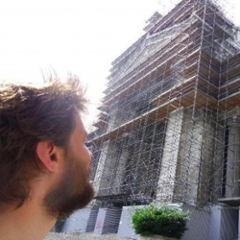logback-config
Typesafe config configurator for Logback.
Installation
If you use maven, add the dependency to your pom.xml file:
<dependency>
<groupId>org.gnieh</groupId>
<artifactId>logback-config</artifactId>
<version>0.4.0</version>
</dependency>
If you use sbt, add this dependency to your build.sbt file:
libraryDependencies += "org.gnieh" % "logback-config" % "0.4.0"
Typesafe configuration loading
The configurator first attempts to load the Typesafe configuration through the Java service-provider mechanism. It looks for a service-provider for the org.gnieh.logback.config.ConfigLoader interface, and calls the first one that it find. If none are found the Typesafe configuration is loaded by a call to ConfigFactory.load().
If the configuration value scan-period is assigned a duration value then all regular files (those directly contained in the file system) encountered in the Typesafe configuration will be checked for changes at that interval, and the configuration will be reloaded if any have been modified.
Configuration root
By default the logback configuration keys are all under the top-level logback key. You can override this by changing the value of the logback-root key. For instance, let's say you have two different logging configurations, one for testing and one for production. In your reference.conf file you can have:
logback-root = production.logback
production {
logback = ${logback} {
// logging configruation, see below
}
}
In your test configuration file you may then have:
logback-root = test.logback
test {
logback = ${logback} {
// logging configruation, see below
}
}
Inheriting from the default logback configuration object brings a valid empty configuration, so that only required keys must be defined. It is not necessary though, if your configuration defines all the required keys (appenders, loggers, and root, see below).
Format
The general configuration format is as follows:
logback {
scan-period = 30 seconds
appenders {
appender-name {
// appender configuration
}
...
}
loggers {
logger-name {
// logger configuration
}
...
}
root {
// logger configuration
}
}
Where appender configuration looks like this:
{
class = "my.configuration.Class" // mandatory
// optional
encoder {
class = "my.encoder.Class"
// optional
layout {
class = "my.layout.Class"
// any other property with name convention and value conversions described below
}
// any other property with name convention and value conversions described below
}
// optional
layout {
class = "my.layout.Class"
// any other property with name convention and value conversions described below
}
// optional
filter {
class = "my.filter.Class"
// any other property with name convention and value conversions described below
}
optional
filters = [
{
class = "my.filter.Class"
// any other property with name convention and value conversions described below
},
...
]
// any other property with name convention and value conversions described below
}
Encoder configuration looks like this:
{
// optional
level = DEBUG // or any other level as described at https://logback.qos.ch/manual/architecture.html#effectiveLevel
// optional
additivity = true // or any other boolean value (see conversions below) as described at https://logback.qos.ch/manual/architecture.html#additivity
// optional
appenders = [ "appender-name", ... ]
}
Name convention
Configuration keys are mangled to a property name with following rule: any dash (-) followed by a letter is mangled into the uppercased letter. For example, configuration key my-property-name is mangled as myPropertyName.
Value conversion
Possible value types in configuration are translated into equivalent type in Java. Here is the conversion array
| Typesafe config | Java |
|---|---|
| integer | int |
| floating point | double |
| string | java.lang.String |
| boolean | boolean |
| null | null |
| array | java.util.List |
| object | java.util.Map<java.lang.String,java.lang.Object> |
